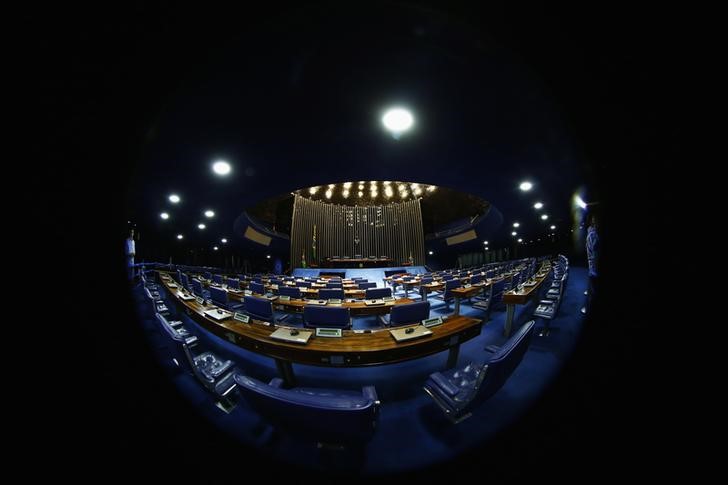FBI Director Kash Patel enjoys access to a litany of professional perks, among them use of a Gulfstream G550 jet, a 15-passenger luxury aircraft owned by the Department of Justice that he has reportedly taken to visit his aspiring country musician girlfriend. Responding to growing outrage about his personal use of the government jet, Patel has insisted those who track his flights are dangerous and cowardly.
Unfortunately for Patel, tracking flights is legal, easy, and an important tool of government transparency.
The location of aircraft within and around the United States is public because the law requires it to be: The Federal Aviation Administration mandates that aircraft must be trackable for safety reasons, namely, to prevent them from crashing into each other all the time. Aircraft, whether privately owned or operating for a major carrier, from a small prop plane to a jumbo jet, are generally required by law to carry a radio transmitter, called a transponder, that continuously broadcasts its GPS coordinates and other information, such as altitude and ground speed. Thanks to what’s known as the Automatic Dependent Surveillance–Broadcast, or ADS-B, unencrypted transponder signals are received by other planes in the sky and anyone with a compatible antenna on the ground. According to the FAA, “ADS-B improves safety and efficiency in the air and on runways, reduces costs, and lessens harmful effects on the environment.”
Accessing these broadcast coordinates from the ground is only slightly more complex than tuning in to a local radio station. Entire online communities of aircraft hobbyists, researchers, journalists, and others make use of this open source data to chart the travel of foreign dignitaries, military movements, corporate executive trips, and, now, the director of the FBI.
As vessels of the rich and powerful, the ability to track private flights provides undeniable value to the public: It’s been used to monitor Russian oligarchs, map the CIA’s foreign torture program, and calculate Taylor Swift’s carbon footprint. That this tracking is entirely legal hasn’t stopped the owners of private jets from objecting to the practice. Elon Musk notoriously threatened legal action and banned users from his “free speech” platform X for revealing the movements of his private jet, a practice he described as tantamount to sharing “assassination coordinates.” The use of luxury planes by public servants is a perennial political issue too. In January 2023, two years before he was named as his successor, Patel blasted FBI Director Christopher Wray’s use of the “tax payer funded private jet” based on exactly this same public tracking data.
Patel’s attitude has changed now that he enjoys free use of that jet. In October, Patel’s jet was monitored flying to to State College Regional Airport in Pennsylvania, a brief drive to an arena on the Penn State campus where he and girlfriend Alexis Wilkins were photographed at a Real American Freestyle pro-wrestling event at which Wilkins had performed a song. Flight data then showed the jet headed to Nashville later that evening after the wrestling match, where Wilkins lives, according to her personal website. After facing criticism for using a government plane to see his girlfriend sing the national anthem at a local wrestling event, Patel quickly lashed out in an X post, attacking public scrutiny of the flights and claiming the use of such data is “cowardly and jeopardizes our safety.”
As FBI director, Patel is required by federal policy to use the jet for personal trips, but Patel is also required to reimburse the DOJ for personal flights. The FBI did not respond to a request for comment or questions posed by The Intercept, including whether Patel has reimbursed the DOJ for personal jet use.
Plane-tracking websites usually draw data from several sources, with many relying heavily on information straight from the FAA. Jet owners can ask the FAA to exclude their transponder data from public trackers, a request many commercial services will honor. For this reason, many plane-watching enthusiasts favor ADS-B Exchange, a free website that crowdsources transponder data collected by thousands of volunteers on the ground and pools it for public consumption. Because it uses crowdsourcing instead of just official FAA data, ADS-B Exchange shows every flight its connected antennae pick up — even if the aircraft’s owners have requested to be delisted. (Although it’s the most comprehensive, certain flights, like military planes that broadcast encrypted coordinates, can remain undetected even by ADS-B Exchange.)
Software engineer and plane tracking enthusiast Jon Wiseman recommended ADS-B Exchange and Airplanes.live, another service. “They don’t use FAA data, so they’re not bound by FAA rules on what data can be distributed. They also don’t take requests from aircraft owners to anonymize flights,” Wiseman explained.
ADS-B Exchange, with its sprawling, comprehensive map of nearly every plane in the sky, can be overwhelming at first. But tracking Patel’s jet (or any aircraft) is simple. Last year Congress made it more difficult for the public to connect private jets to their owners; establishing the ownership of non-governmental planes can sometimes require serious digging. But the existence of the FBI jet is a matter of public record, and its registration information is publicly available from the FAA’s website. Each plane in the FAA’s system has a unique number: Patel’s is N708JH. The FAA website confirms that N708JH is owned by an entity at 935 Pennsylvania Avenue in Washington, DC, the address of FBI headquarters. Searching ADS-B Exchange for N708JH will immediately pull up the plane’s current position, if in the air, as well as historical records of past flights. At the time of publication, the jet was last clocked landing at a municipal airport outside of Washington.
Pressing the “Play” button on ADS-B Exchange’s interface will animate a selected historical flight route. It’s possible to dive deeper into the data using filters; appending “?mil=1” at the end of the site’s URL will show only available military flights, for example.
Anyone can search the FAA website to find other planes of interest; a search for the word “department” reveals dozens of aircraft registered to various federal offices. The website Planespotters.net collects runway photography from around the world, including of N708JH, and can be used to find other aircraft belonging to the Justice Department or other government entities. With a tail number in hand plucked either from FAA or another source, it’s not hard to figure out a plane’s location and travel history.
There are limits to what flight data can reveal. Nothing about the purpose of a flight is disclosed, nor are its passengers. But in conjunction with other open-source information — Wilkins’s Instagram account placed Patel alongside her at Real American Freestyle — it can help fill in the gaps.
The Wall Street Journal recently used flight data from the plane-tracking service FlightRadar24 in a recent report that showed not only had the FBI jet traveled to Nashville coinciding with Wilkins’s wrestling performance, but shortly thereafter also ferried Patel to the Boondoggle Ranch, a Texas hunting resort.
But if the U.S. government, particularly the military, wants to keep a flight hidden badly enough, it will. As the Pentagon launched a string of airstrikes against Iran in June, flight-tracking enthusiasts across the internet latched onto an Air Force refueling plane heading west, toward a base that houses B-2 bombers. Meanwhile, the actual B-2 bombers involved in the strike — which didn’t appear on any tracking portals — were flying in the opposite direction.
Savvy flight-watchers can sometimes get lucky, though, Wiseman explained. ADS-B Exchange also picks up planes broadcasting TIS-B signals, another transponder system. “Many law enforcement and military aircraft only show up on TIS-B. The icons are distinctive, and the [ID codes] are prefixed with ‘~’,” he said. “Sometimes people think those are drones, or fighter jets. They’re almost always just police aircraft, but once in a while, rarely, they are drones or fighter jets.”
Experts suggest new plane trackers chat with other enthusiasts who can share helpful knowledge and context. Discords or other online communities of plane-watchers can help newcomers avoid common errors, like mistaking what might be a typical flight pattern for something unusual or suspect.
Despite Patel’s characterization of plane scrutiny as the work of “clickbait haters” and “uninformed internet anarchists,” plane trackers who spoke to The Intercept all firmly defended the public’s right to know. “Public officials are acting in our name, so we should actively be making sure they’re doing what they claim to be doing and doing so ethically,” Canadian researcher Steffan Watkins, an avid tracker of military and other governmental flights, told The Intercept.
“There’s a strong public interest in knowing how aircraft are being used, and keeping government organizations accountable.”
“There’s a strong public interest in knowing how aircraft are being used, and keeping government organizations accountable,” said Wiseman. “It’s good for the public, journalists, and researchers to be able to see how these aircraft are being used, in detail, and how public funds are being spent, in detail. Transparency also deters misuse.”
Wiseman recounted how flight tracking techniques have been used to reveal governmental aerial surveillance of protests: “If it hadn’t been for the persistence of a bunch of nerds obsessed with planes it’s possible the public would have never known.”
Even the DOJ itself has been a fan of ADS-B tracking. In 2016, Assistant Attorney General Leslie Caldwell said her office had used Dictator Alert, a plane-tracking website that uses ADS-B Exchange data, to aid in criminal seizure investigations.
Watkins rejected concerns — largely by the jet-owning class — that using ADS-B data presents a security risk: “Adversaries, like China, Russia, Iran, etc. already have better ways larger numbers of intelligence professionals tracking these movements, so the public should be as informed as public sources allow.” Wiseman agreed, saying, “There seems to be almost no risk to legitimate operations by making this information public, based on that fact that over the past years that ADS-B has been in wide use and registration information has been generally public we’ve seen very few if any incidents.”

 German (DE)
German (DE)  English (US)
English (US)  Spanish (ES)
Spanish (ES)  French (FR)
French (FR)  Hindi (IN)
Hindi (IN)  Italian (IT)
Italian (IT)  Portuguese (BR)
Portuguese (BR)  Russian (RU)
Russian (RU) 





:strip_icc()/i.s3.glbimg.com/v1/AUTH_59edd422c0c84a879bd37670ae4f538a/internal_photos/bs/2023/l/g/UvNZinRh2puy1SCdeg8w/cb1b14f2-970b-4f5c-a175-75a6c34ef729.jpg)










Comentários
Aproveite ao máximo as notícias fazendo login
Entrar Registro